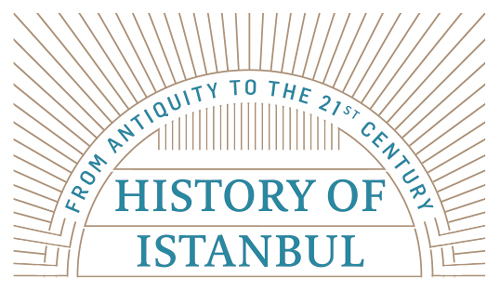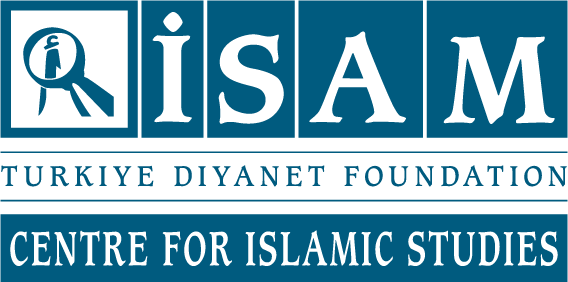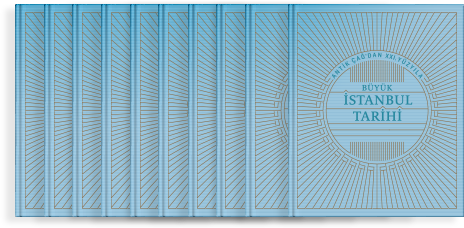One aspect of religious life relates to personal religiosity; different dimensions and degrees of religiosity form another aspect, and these are reflected on the social dimension. Essentially, religious life at the social level evokes a religiosity that emphasizes sociological appearances rather than piety. In this context, the act of being religious can be understood as religious experiences that form the personality; religiosity has a strong social implication. It can be said that the individual and social awareness of religious life affects the individual’s mindset as a whole, and this creates a dominant vision, which ranges from arts to architecture and dates back to the socio-political and socio-economic context of the human relationship.
Like many ancient cities, Istanbul carries features that are interwoven with a constant religious reality both in the pre-Islamic and post-Islamic existence. Be it the traditional pagan structure of the Roman Empire or the Byzantine system of the Eastern Roman Empire, a life-style that had a relationship with a certain belief system on an organic level always dominated the city. In traditional Ottoman urban life, Istanbul was viewed as a cultural city in terms of Islamic demands and expectations. Istanbul, as the center of the empire, was an exceptional model-city, realized by the Ottoman socio-political and socio-economic orders that had gathered in one place. Istanbul, which was increasingly seen as the united representation of the caliphate and the empire, had ready access to the common characters of the social and city life of Islamic tradition. The network of Islamic references left its mark on the social life of the everyday flow and, more importantly, simultaneously influenced the Ottoman governing viewpoint. However, communities, tarikats, and groups of different cultural compositions that were nourished by ethnic or religious traditions exhibited an air of authenticity which could be felt within the unique borders of city life. In this context, when the Islamic tradition is traced, it can be seen that the religious imagination which concentrated on the city life was fed by two sources.
One source had a religious life that was shaped around the academic interpretation of the religion produced by the elites, most of whom were from the academic world, i.e. the ulama. The other source was religious understandings that were transferred into practice with new compositions within the range of daily life, derived from the nature of rural life outside the city. While the systematic emphasis on religion by the ulama was registered with specific procedures and methods, the religiosity that was put forward by the social imagination accepted the guidance of the ulama in a general sense, but was processed in a kind of public Islamism which had its own mentality and features.
However, the composition that determined classic Ottoman Istanbul went through a serious transformation both with Ottoman modernization and the secularization of the Republic policies, inherent in the modernization policies. Religious life, which existed with a certain language in the memory and appearance of Ottoman Istanbul, faced a serious crisis during different stages of Turkish modernization. During the chaos that was fed by the crisis, the religious discourses, the representations, as well as the belief and values map which gave structure to piety were exposed to profound intervention.
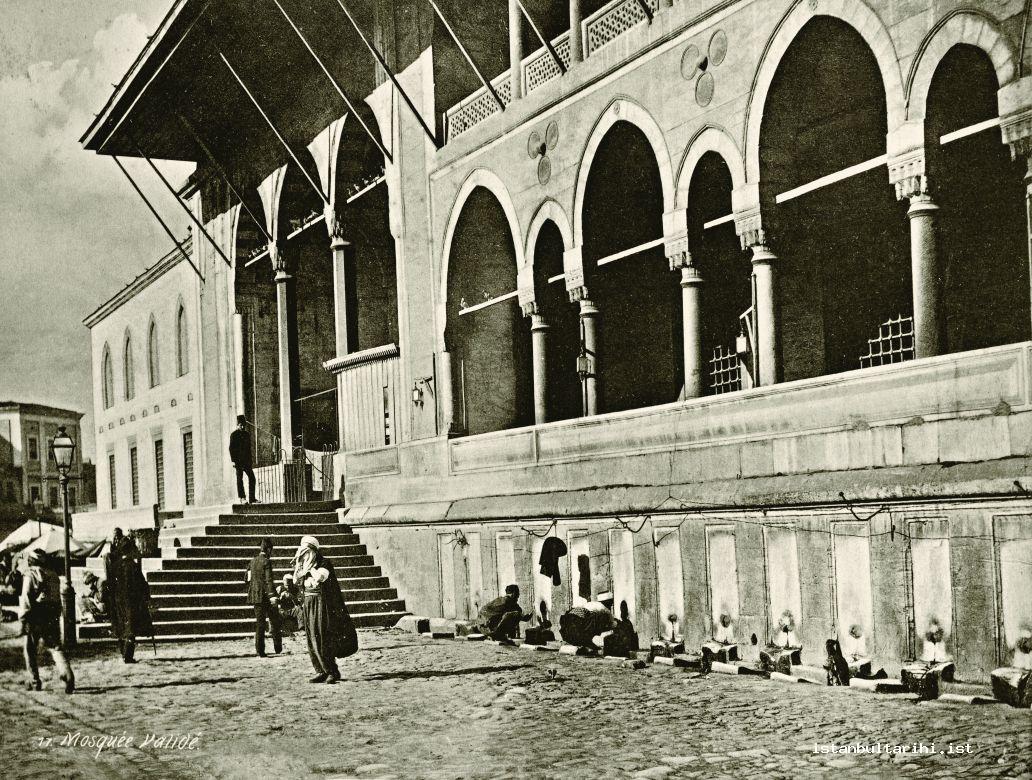
At the founding of the Republic, Istanbul had a charismatic identity and importance as a city which represented the empire and caliphate. Despite this, the city was viewed as a monument of tradition that was not as noteworthy as it had previously been. On the map of values of the new regime, the image of Istanbul was regarded to be the representation of the sultanate, caliphate and other former regime. There is no question that any political figure could reasonably decide to neglect the weight of Istanbul. However, to cover up the connotations associated with the old regime in Istanbul, which was the main concern, overshadowed any connection with the past. As a result of the “storm of secularism”1 Istanbul, on the one hand, had to re-evaluate religious life that was sustained by the conventional composition and reform it, while taking the subsequent suggestions and directives into consideration; on the other hand, it needed to update the historical identity to which Anatolia was doomed and rationalize it. In this context, the fact that Istanbul was invited to fulfill modern expectations and, in a way, prove itself to the values of the new regime in complete fidelity can be evaluated as a convenient way of revealing the direction that the existing changes took.2
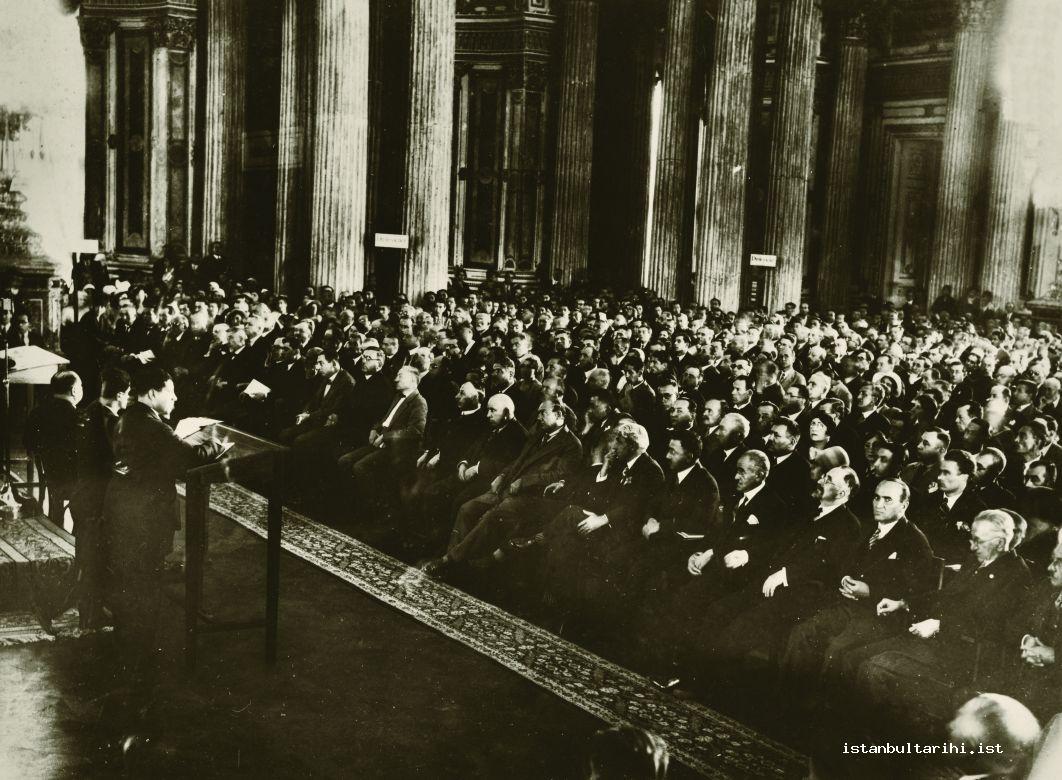
In this regard, Istanbul was forced to show a sense of loyalty to the new regime in a more profound and deep-rooted way than other cities. The ancient self-confidence which had been nourished by Istanbul’s urban charisma as an imperial center had to protect itself against weakening in the face of a center like Ankara, a city that reflected the sentiment of the new regime at a considerable level, as well as against creating an impression of being threat due to the visibility of the religion.3 During this process, the religious feelings that developed in the inner world of individual believers became the focus of attention of the public; from this mentality, the religious feelings became reflected in the life, street, neighborhood and manners; perhaps for the first time they were subject to a delicate evaluation. Roughly, it was implied that as long as these inner feelings and orientations were kept within a person’s inner world, they would not be a problem. Thus, the structure of spirituality which encapsulated all aspects of daily life was fragmented and compatible forms of secular expectations were expected to fill the remaining gaps. This was a genuine change in a city like Istanbul, which had always been open to cosmopolitan diversity, and which had a high capacity to tolerate difference.4 The imagination which internalized spirituality based on Ottoman tradition and managed the widespread influence of religion in the private and public sectors would henceforth come face to face with a fundamental transformation. This situation would be transformed into one where spirituality was confined to ceremonies, where religious demands and expectations were questioned or discredited, and compromises with the outside world’s secularizing influence was made in an attempt to establish a common language of religion via this medium.
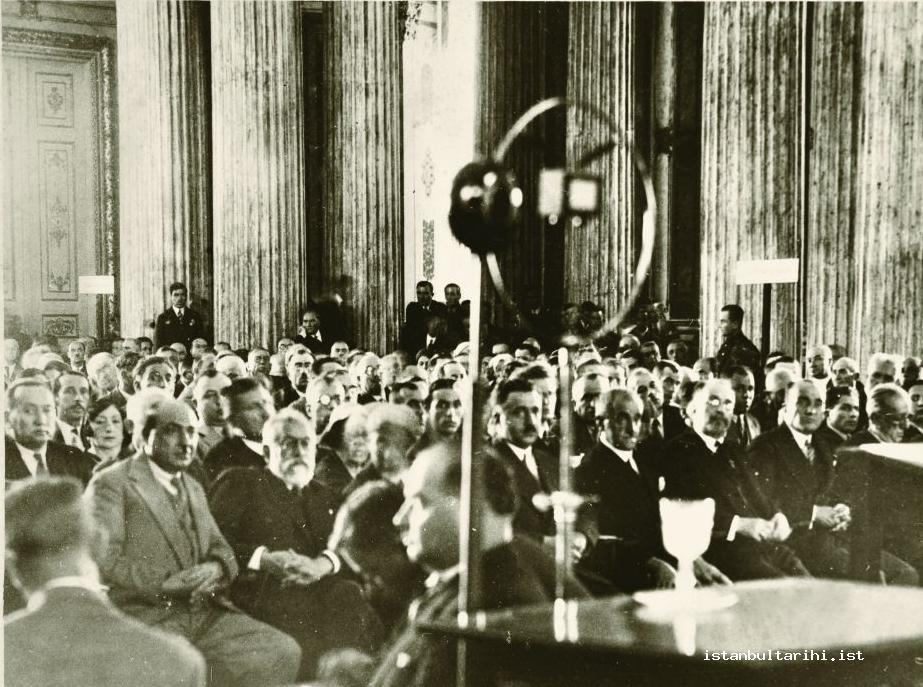
In the subsequent processes which followed the political and cultural disintegration in the Ottoman hinterland, the geography of Islam in many areas was divided into small and large nation states. Istanbul, within the cycle of complicated international politics, took its place in the new Republican regime as the center of what remained of the Ottomans. In the adventure of the Turkish modernization of the city, any resistance related to feelings of loyalty to the old regime has always been searched for. This weak idea, an extremely misleading fear, stemmed from a neglect of Istanbul’s importance in the early episodes of Turkish modernization. Indeed, in the processes of Istanbul-centered modernization, the main concern that was fueled by the city’s exceptional piety in almost every step in relations established with the West was generally limited to the city’s search for legitimacy. In a narrow frame, placing to one side any objections presented as associated with strict religiosity, such as the Mart 31 Olayı (March 31 Event - April 13, 1909), what marked the city’s religious life was that it was peaceful and moderate. It can be said that this moderation continued during the Republic of Turkey. However, at this point, a significant difference should be noted. Ottoman Istanbul’s peace and moderation was a part of daily life fortified by the state to ensure religious integrity. With the advent of the Republic, this situation was nourished by nostalgia for past times, but with new calls for moderation, civil concerns or politics of fear exerted their authority.
Istanbul’s religious life entered this new period in an exhausted and nervous, even confused, state of mind. A social structure that was strengthened by tarikats, Turkish-Islamic guilds, district and neighborhood organizations, and finally imam-centered community structures - which were a must in daily classic Ottoman life - were turned upside down by new regulations, becoming divorced from their religious and social functions. Istanbul, which had been turned into a mausoleum for the ancestors and to the past, faced a great deal of barriers in creating its soul, life-style and dream of the future. The reform project that claimed to encompass social life in the Republic was launched with a series of reformist laws. This project prioritized disciplining almost every point of everyday life by converting the most basic components of the social structure. The most prominent goal of this project was to reach “the level of contemporary civilization”, which was accepted as an ideal state of development; in order to actualize this, secularization and secularism were to be ensured. These would enforce the normative interpretation of the concept in a form; the content of this form would be updated over time. The structure of religion would be the area most affected. The perspective, which in the Ottoman world worked in every area of social, economic, and cultural life in parallel with the legitimacy of religion, would be extremely narrowed in this new period; life with its new, but highly uncertain appearance would be forced into a thorough transformation. With the Republic’s new approach, teaching and incentives, religious life,5 shaped around the imam, would lose its public visibility as an indicator of religious esteem at a district and neighborhood level. Thus, the new places of religious devotion would be official places of worship and the consciences of the believers.6
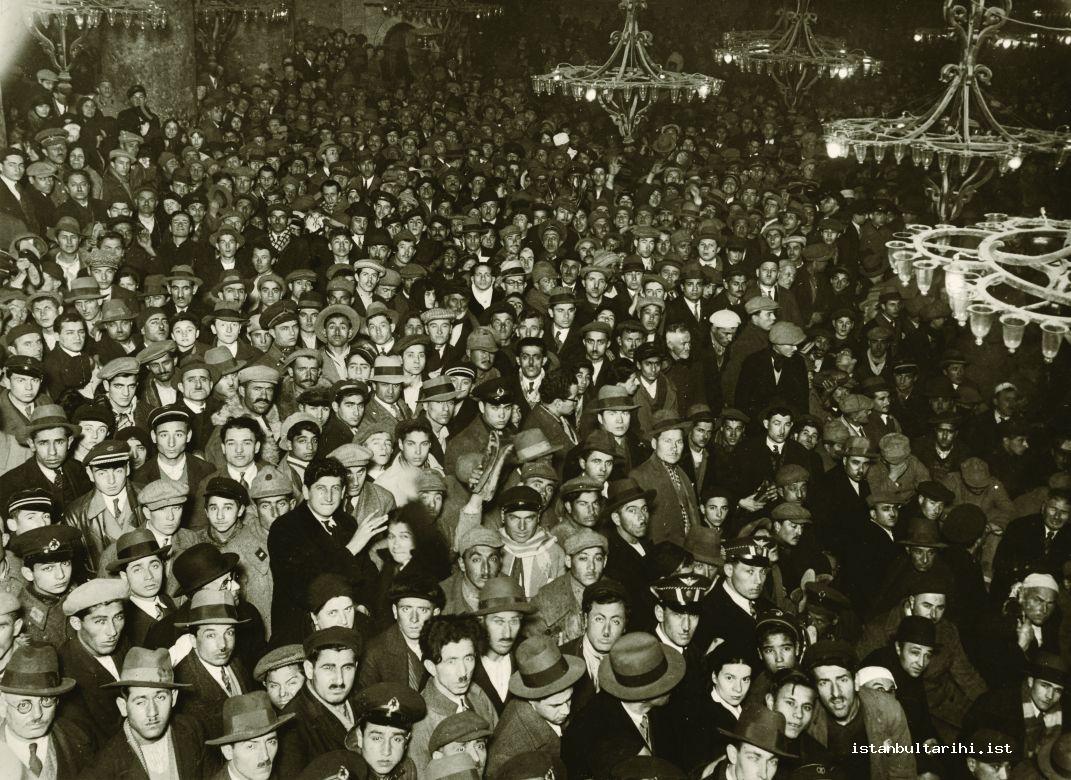
It is clear that with measures and interventions, such as the implementation of the Medeni Kanun (Civil Code), the banning of symbols of religious status, the closing of tekkes and zaviyes, regulations in the area of clothing, including the wearing of hats, the introduction of the Tevhid-i Tedrisat Kanunu (Unification Act), the abolition of the caliphate, and the Alphabet Reform in particular, oppressed the existing social structure, forcing to a considerable extent an abandonment of traditional religious choices and tendencies. Finally, it is clear that the process which functioned in all this turmoil was aimed at transforming the world of reality both horizontally and vertically.7
With the modern Republic, religious life ceased to be associated with Sharia-based law. The main direction of this change, which can be read as the partial abolishment of Sharia, was that almost anything which could be considered as having a religious context would be given a definition that would remove it from having a religious connotation. With regulations that were aimed at oppressing the inclusive / comprehensive role of religion in tradition, life was expected to be secularized.
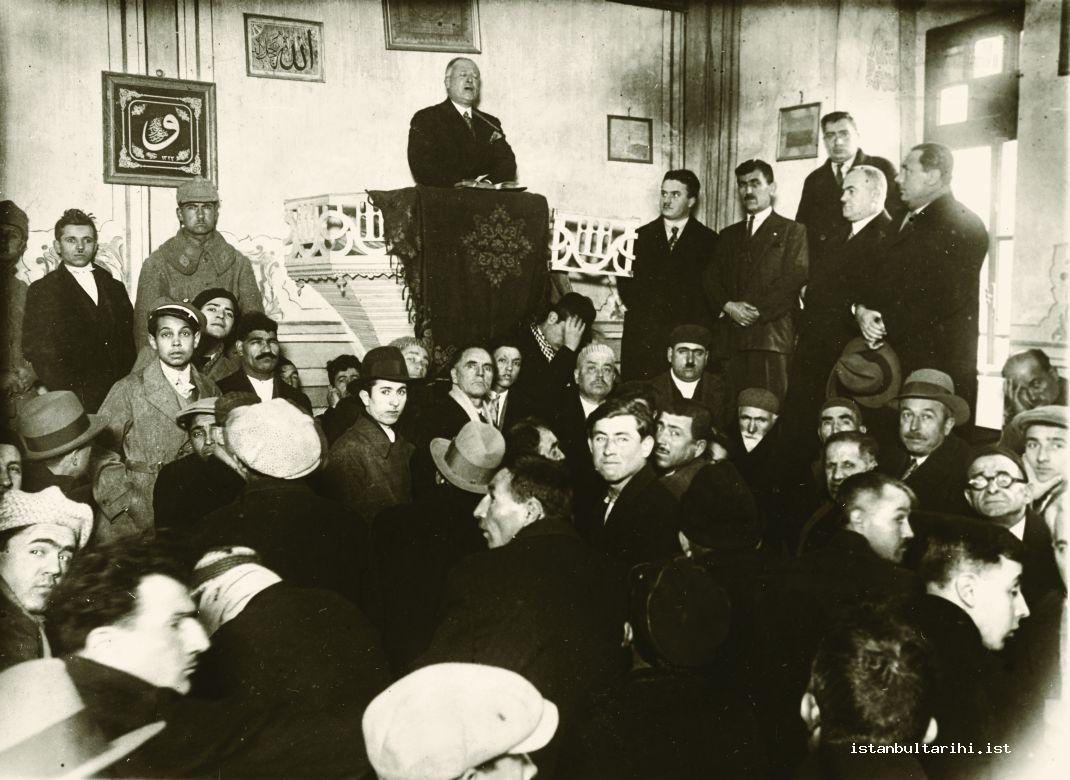
However, in accordance with the theoretical acceptance of the progressive / positivist world view of the Republican elements, the results of the interventions applied to make what is religious fall from favor or towards upsetting the existence balance were not as expected.
The energy that religion created by being included in all divisions of social life, from language to culture, from knowledge and value production to art, aesthetics, etiquette, and so forth, was aimed at independently producing a holistic life style in almost every field, from politics to economics, from public order to world vision. The modernization initiative pioneered by the Republic’s elite transformed this said energy into a dysfunctional state. In this context, the general population preferred to pursue the relationship that they had established with religious expectations and demands with a strategy of withdrawal.
The impacts of the early modernization processes, which knew no boundaries, were met with deep concern and sorrow, especially in the early days of the Republic. Yahya Kemal emphasized the reflections of the installation of the modern social order on private worlds in Istanbul, and he stressed that the picture which had emerged was the result of true rootlessness.8 Unfortunately, it is possible to speak of neighborhoods in Istanbul which “no call to prayer”; moreover, it was possible for religion to be unable to find a place for itself in the channels of identity of the new generation as they grew further away from traditional central neighborhoods.9
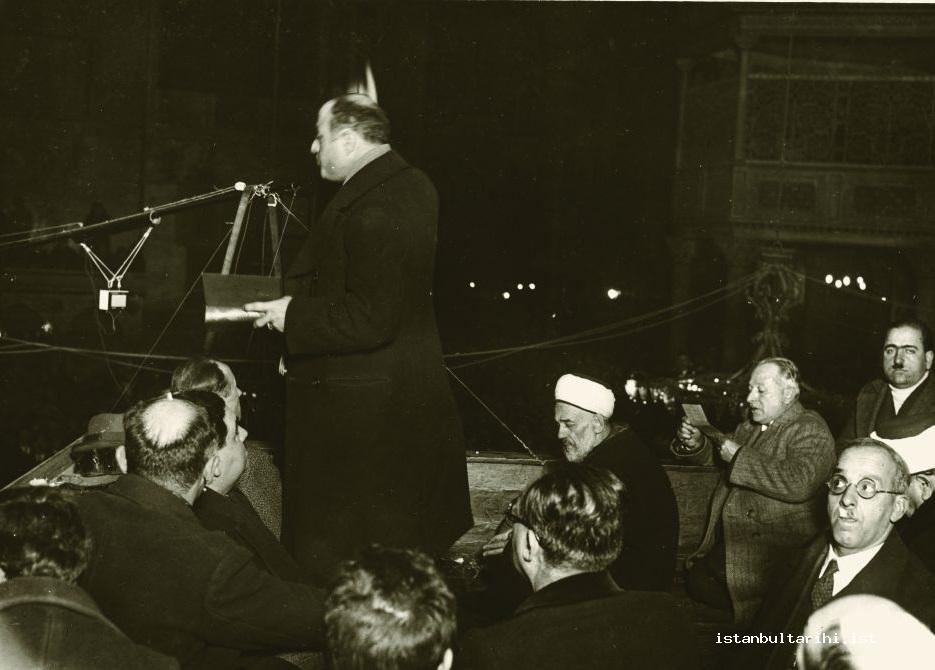
Indeed, in a similar way, Orhan Pamuk gives a separate place to the issue of religion with his observations in his personal testimony of his childhood world in the work entitled Istanbul; here he describes the existing perception of religion in the cultural climate of the neighborhood in which he grew up. The environment in which Pamuk grew up corresponds with what Yahya Kemal emphasized with his description, “free of religious atmosphere” or “sterile zones.” In his childhood world, the image of God was as an “unremarkable face, extremely elderly, interested in the poor, a very honorable woman in a white veil.”10
Thus, every time that contemporary Istanbul is mentioned, it is easier to talk about new points of separation which are increased with cultural and religious divisions; this gives rise to a split of conceptual structures rather than engendering a certain religious integrity.
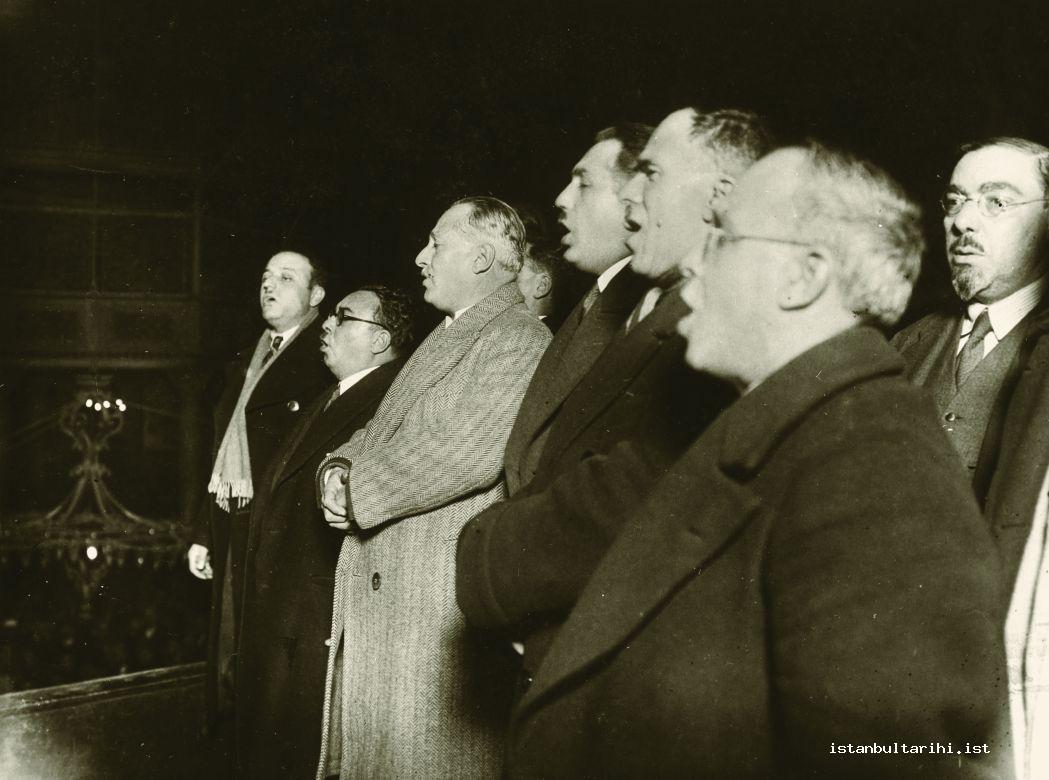
It should be noted that amidst this transfer from one worldview and culture to another worldview, it is not only Istanbul’s traditional silhouette, but also its spiritual structure which encountered serious fracturing. This decomposition was ultimately dragged into a chaotic competition; a competition in relation to the issue of what Istanbul’s direction should be, marked by occasional political interests, a competition between districts such as Üsküdar and Fatih, where religious sensitivities were concentrated, and between districts such as Harbiye and Nişantaşı, where secular awareness gained momentum.11 In this context, the city that was portrayed as “the Istanbul of Fatih the Conqueror (Mehmet II)”12 by the religious masses was to have the desire for a cosmopolitan city projected onto it by those who were determined to meet daily life from a secular discourse. In any case, a group that tried to find a middle ground in this decomposition hosted, to an extent, a repertoire of identity that sometimes can be considered to be hybrid and sometimes arabesque; there were strong waves of migration in search of a new identity; as the years passed this worsened, particularly in the 1960s.13
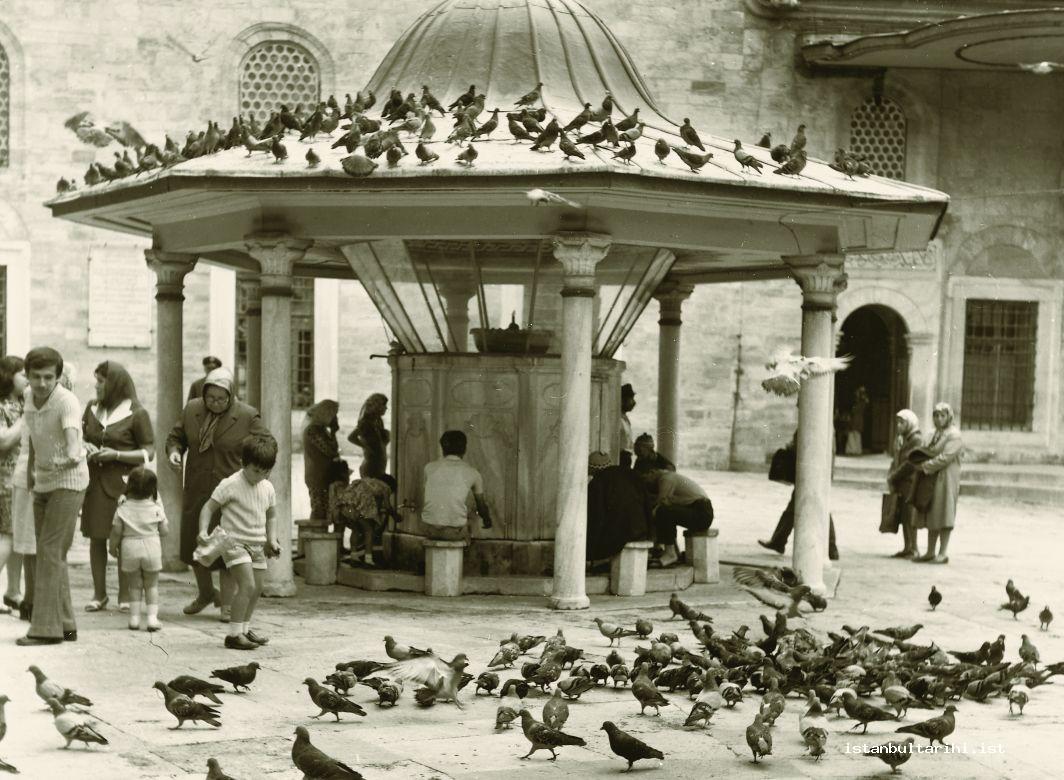
With the Republic, every citizen was clearly asked to put a distance between his personal world and sets of reference which could be considered to be in agreement with the old regime. The state became directive, even determinant in regarding what was good, right and true for society, with new patterns of legitimacy and new enforcement mechanisms being implemented. With the implementation of a modern curriculum as the main source of designing an ideal future in all educational institutions, each part of everyday life was to be shaped in a way that was dependent on the requirements of the new ideological understanding. In the long term, it can be said that with this arrangement the aim was to revise the cultural and traditional body of knowledge of society; this was particularly true for religious perceptions. A different direction was to be turned to. The existing situation came face to face with the steps of this practice, from eliminating religion from daily life to eliminating certain interpretations of religion which could be analyzed in unorthodox ways.
While some objection and opposition movements were considered to be anti-regime movements, some had the possibility of being carried through despite relying on a religious discourse; undoubtedly this was the source of the fear and anxiety that the Republican administration always had. In this context, an old city which had institutionalized its own religious life and which was remaining within the ethos of the prior civilization had no legal guarantee to ensure that many of the things the city desired to maintain or revive would still exist in this new period. Therefore, it was only to be expected that Istanbul would go through a radically poor period of civilization. The condescending attitude of the new class of elites during the stages of the Ottoman modernization, mostly towards religious life and piety, were now considered important in the eyes of the state.
When the history of the Republic, which covers a span of more than 80 years, is taken into consideration, various signs of religious life can be seen to have been fed by modernizing political attitudes, aspirations and economies. Changing world conditions and the relationship established with what is religious on a political level with that which was concerned with democratic pluralism became introverted in an environment of authoritarian modernization in the Republic of Turkey; thus, these ideals were exchanged for images and structures which, under given political conditions, tended to develop in an obvious direction.
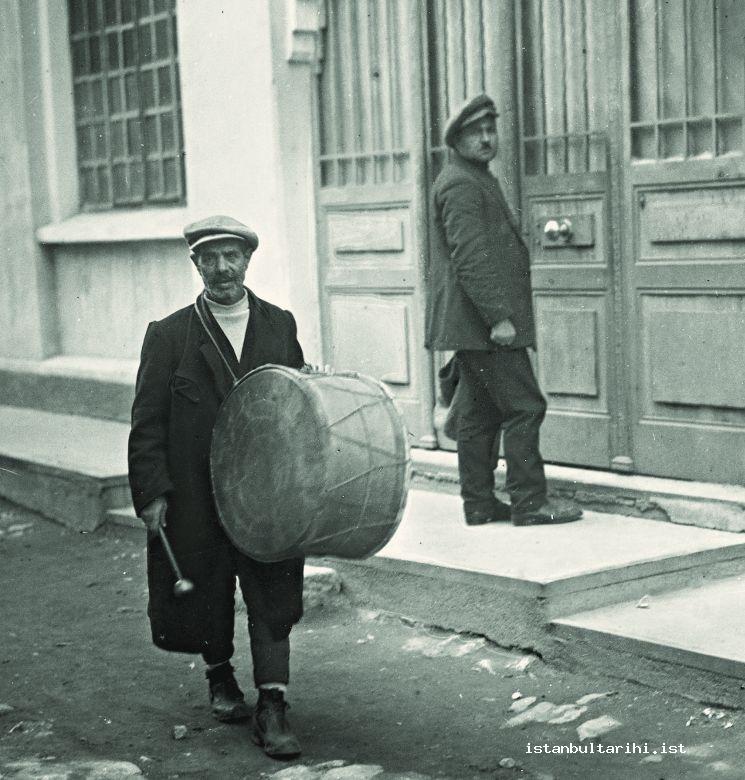
First of all, in the new period the tarikats that existed in the Ottoman society lost their function; this loss created a serious gap. However, the role that the tarikats played in the re-establishment of Istanbul from an Islamic perspective was priceless.14 The tarikats not only provided an interface between the state and society, but in the eyes of the people they led the way in breaking the monopoly of Islamic interpretation under the guidance of the ulama. The tarikats were mostly effective in determining the limits of pious religiosity. It is quite possible to interpret these institutions as an articulate supervision mechanism which had an active role over the socio-cultural and political texture of daily life.15
The closure of the tekkes, one of the main venues in which religious life existed within the Ottoman tradition, and the banning of tarikats, institutions that protected different forms and colors of belief and worship with unique interpretations and practices, created an atmosphere of complete withdrawal for many people who had maintained their relationship with Islam through these kinds of structures. The fact that the tarikats, which served as a buffer mechanism in bringing Islam to the level of communion with the broad masses of people, were forced to withdraw from daily life can be seen as a serious loss for society. The closure of the tarikats led to the end of activities that were, in a way, unique to these institutions. In this context, Sufi literature, music and arts, such as calligraphy and marbling, which had become direct indicators of religious affiliation, were doomed to the same fate. The values of the new regime were unable to achieve any remarkable success in replacing what the society had gained through traditional institutions. It was not until the multiparty political period, when religious dynamism emerged, that the tarikats had opportunities to carry out their activities with relative freedom.
The re-development of the tarikats in the Republican Istanbul became possible in the socio-cultural climate of the 1950s.16 It was anticipated that with the closure of tekkes, “heretical tendencies” among the broad masses of people could be dealt with and ultimately society could be directed towards positivist data from the world of science with a rationalist and intellectual perspective; however this anticipation could not always be realized at the same level. In the past, there had been many attempts to cut off the contact of memories of identity with society, but in the end, these only had a temporary impact, creating no lasting effect. The impact of urban piety, which had been integrated into Istanbul’s city existence, continued for a long time. In particular, this continuation was maintained for the most part by political preferences that gave importance to the compensation of religious and cultural losses and with tacit activities of tarikats which were forced to go underground.
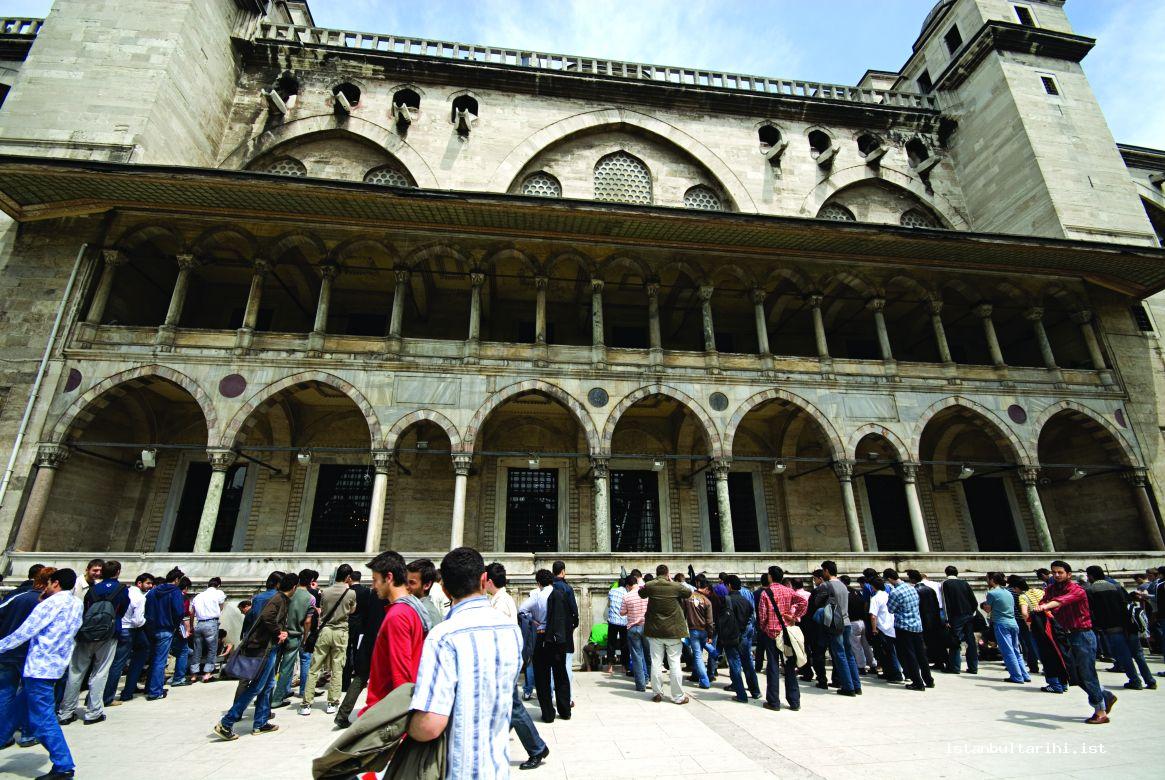
During the transition from the Ottoman Empire to the Republic the new situation of the tarikats were doomed to be protected in a careful and attentive way, thus preventing doubts. The anxiety about the possibility of undergoing legal investigations and proceedings forced many tariqats, in particular the Naqshibandi and Halwati, Rifai and Qadiriyya, to abandon many of their institutional habits and hopes in order to maintain their existence under conditions in Istanbul; they had to reduce the duties and responsibilities that they had shouldered as well as fill in the gaps that the new period revealed. Thus, thanks to the new vision that was developed based on service and assistance, functioning in the basis of ev sohbet (house chats), services provided by waqfs and derneks (associations), stereotypes began to change and the activities were carried out at a lower concentration. At a time in which pro-secularist tendencies unexpectedly gained power, the tarikats became an extraordinary shelter for many people. The tarikats offered a strong religious identity, and the educated, in particular, entered the revitalization process due to the relief provided by multi-party political life.
For the people of Istanbul, who were experiencing a period of restriction in the continuity of religious life, mosques and tombs in Istanbul, particularly the tomb of Eyüp Sultan, became the sole places of reliance. As a result of the Tekke ve Zaviye Kanunu (law on dervish lodges), the strict practices at the beginning became relaxed and some tombs were opened for visits by the public.17 It should be noted that, as in other cities of Anatolia, at times, visits to tombs in Istanbul can sometimes have the potential to take precedence over mosque-centered worship. These places, which were officially forbidden, had a considerable function in aestheticizing daily life its own unique mix of “the people’s Islam,” under the guidance, which can sometimes be seen to be loose, of the tarikats.
The month of Ramadan, one of the most important periods in religious life, is significant in that it brought the flow of life in the city to a spiritual climate.18 Despite the ambitious secular demands and the state’s religion project, the month of Ramadan has always been welcomed with high levels of spirituality and lately there has been an effort to revive this almost everywhere in Istanbul. Even though Ramadan is directly regarded as an activity of entertainment in some neighborhoods, it is also possible to say that it is conducive to a concentration for a desire of religious depth. The month of Ramadan, in terms of religious life, undoubtedly adds to the city a spiritual flavor, created by the fast, with the iftar and sahur, collective Qur’an readings and the tarawih prayer, the illuminated mottos hung between the minarets of mosques, the visiting of holy relics, disciplined time schedules, practices which require a high level of attention, and a high level of mobility. Ramadan creates a pleasant atmosphere and a strong awareness among the residents of the city, Muslim or not, even in those cultural areas that include a lifestyle that is problematic with respect to the Islamic faith and traditions. In this context, the religious intensity of the month of Ramadan is greatly enriched by objective and subjective images, as well as an atmosphere of joy and serenity which surrounds the city. This climate is the environment expected and demanded by even those whose relationship with fasting and Ramadan is weak.
During the single-party rule it would be difficult to say that there were any clear stringent measures regarding mosque or religious worship, despite the concern about restricting the visibility of that which was religious in the presence of secularizing policies. This prudence reflects the sensitivity of society in religious issues. However, at first there were attempts to convert religion into a private interest connected to the believer’s heart and conscience. In this context, the mosque was forced to accept all roles and functions that the different locations had carried out in the past; the mosque now was the only legitimate place of worship. Thus, it is not possible to speak of a consistent flow of religious life. On the contrary, the halt and start, acceleration and retardation of religiosity as defined by the outside is the matter in question.
In this context, tarikats substantially ceased to be places that could be seen as being in part parallel with the mosques; as a legal requirement they had to abandon all their privileged roles. In the end, all of these roles were assigned to the mosques, all of which were under the control of the state.19 Many tarikats, lacking the explicit or implicit support of the new regime, either diverged significantly from their own direction or attempted to get closer to the official system by reorganizing their own structure.
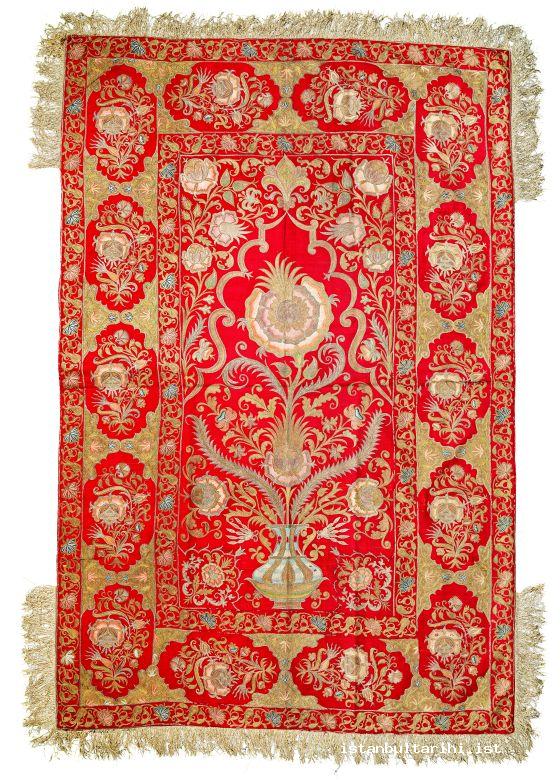
The abolishment of the Şer’iye ve Evkaf Vekâleti (ministry of religion and waqfs) can be evaluated as an exercise in the organization of religious life during the transitional period. The newly created Diyanet İşleri Başkanlığı (ministry of religious affairs) was intended to fill in the gap left by this event. However, it soon became clear that the area of authority allocated to this institution was limited. It can be observed that despite the legal status and social roles of the office of the sheikh ul Islam - which existed as one of the main pillars of the Ottoman religious bureaucracy - and the Şer’iye Vekâleti - which was significantly restructured as far as its authority was concerned - the burden that the Diyanet İşleri Başkanlığı took on in the Turkish Republic was very slight. The office of the sheikh al-Islam had been the sole authority responsible for education and activities related to worship; in addition this office was responsible for regulating the basic appraisal criteria, such as maintaining Muslim life norms and institutional interpretation on any issue that could be experienced in the private lives of the people, or indeed on any issue that might reverberate in government offices. Religious institutions under the umbrella of the office lost their meaning and function in the new period; the roles attributed to or taken on by these institutions were distributed to other institutions. In this framework, the roles given to the Diyanet İşleri Başkanlığı of the Turkish Republic were limited to updating existing practices in the area of worship, morals and values and reshaping these according to the values of the new regime.
The sources of religious life in the Republican Istanbul were exposed to radical change. First of all, the reference channels of religious knowledge and aspects of daily life were subjected to a serious transformation. In this context, it is of course possible to talk about the existence of religious education institutions which were established according to different considerations; however, from the beginning, the general public were in general suspicious and hesitant about the results of these steps. It is difficult to determine whether these regulations manipulated or revived religious life.20 Indeed, the “reform in religion” which was on the agenda in compliance with the worldwide mood of that period, and which was actualized with modernizing tendencies in the founding years of the Republic, were very effective in deepening such suspicions. Indeed, even though the reforms actualized under the leadership of the Faculty of Theology of Darul Funun (Istanbul University) that were carried out in order to create the necessary interest were appreciated neither by the public nor by the political elites, it should not be forgotten that almost every episode of the long-term revitalizing reform vision is remembered with different attractions. Practices that were implemented in daily life between 1932-1950, enforced with the threat of penal sanction for those who did not obey, and referred to as “worship in Turkish”, included the ezan (call to prayer) in Arabic being forbidden; attempts to translate the ezan from the Arabic included a political conviction that ignored public opinion. In this respect, the activities of translation and commentary of the Qur’an were approached cautiously most of the time, interpreting it with a conscious purpose which deviated from being related to a religious act of instruction.
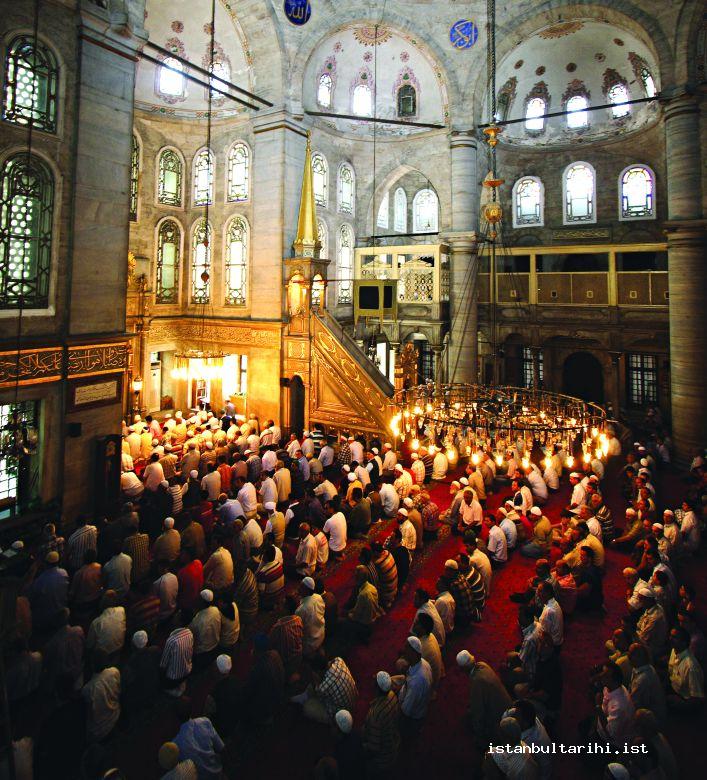
The conclusions that the people of Istanbul would draw from these practices, involving important symbols and signs of the Ottoman civilization evolving into a new world, were undoubtedly frightening. The ezan, which was one of the most important symbols of the Islamic tradition, was recited almost everywhere in Turkish until the multi-party era; this can, in a way, be seen to be the result of the nation-state form; however, in reality the main objective was based on a sentiment that wanted to destroy all connections with tradition.21
With the promulgation of the Republic, the changes which occurred in the parameters of religious life in Istanbul did not achieve a homogeneous integration into daily life. Different sources of knowledge, changing class profiles and the production of formal and informal values all significantly transformed the religious sensitivities of believers. New forms of spirituality which moved forward based on a political reflex had the power to disrupt the traditional/public appearance of Islam. From the 1960s, the population became concentrated in urban areas; it was with this urbanization of Istanbul that provincial piety flowed into Istanbul. The consequences of these immigration configurations led to a life style that can be considered to for the most part odd or hybrid.22 When multiparty political life began, religious interests, interventions by the interim regime which paid excessive attention to the intensity of activity, and interrelated phenomena, such as internationalist Islamic interpretations which were achieved via global information channels, significantly undermined the flow of religious life. Since the 1990s efforts of the right wing and conservative local governments to resurrect the past, emphasize structures and spaces, and revive memories of people regarding the revival and restoration of neglected traditions have been surprisingly effective in efforts to secularize religious preferences.
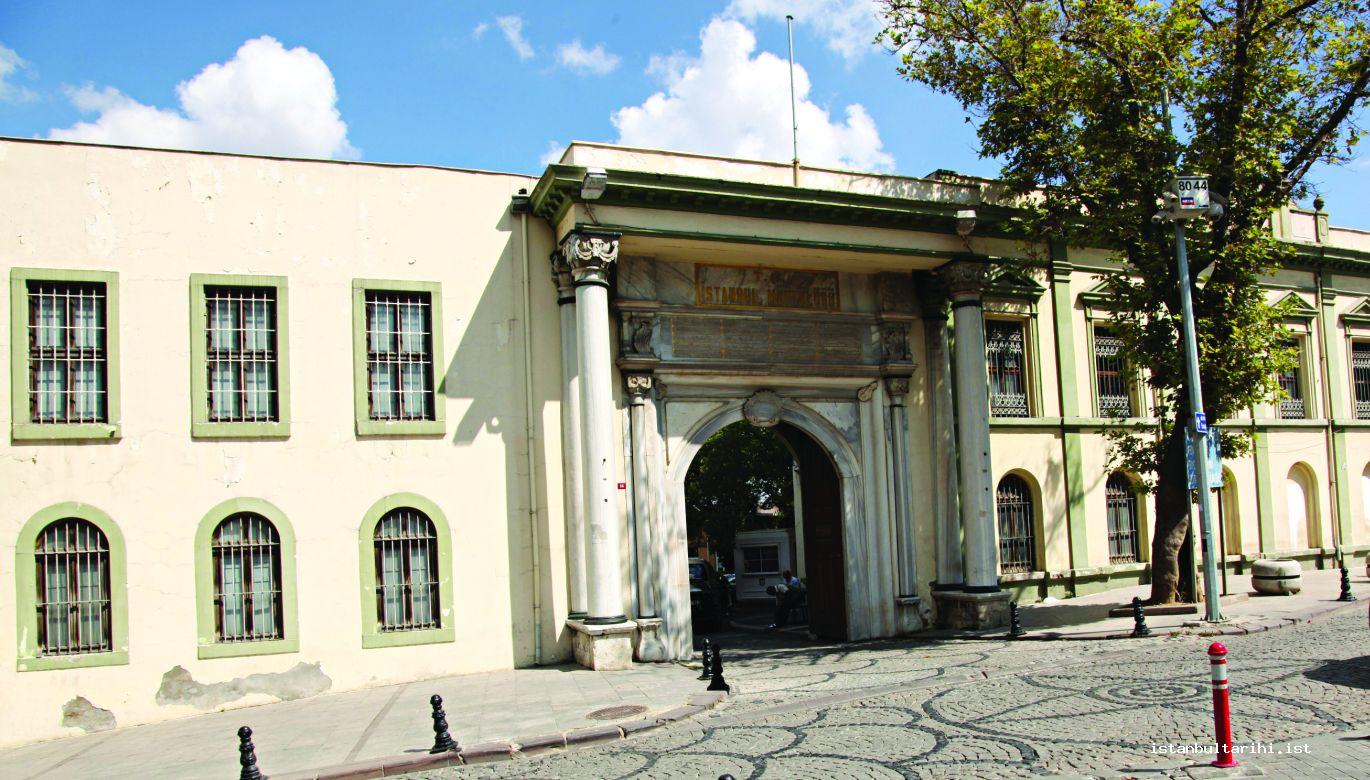
On the other hand, it should be emphasized that the phenomenon of an increase in religious interest, which began particularly after the 1980s, brought every believer face to face with tension on a different axis.23 Essentially, religious devotion as a multidimensional phenomenon is an integral part of the Muslim identity.24 A move towards Islamization gave more weight to visibility of Islam as a competitive ideology on the basis of individuality; in addition to new consumption habits, a radical transformation in mentality, a movement for change, which could be called Muslim modernization, and a great deal of internal repairs and regulations, not only replicated the clusters of life of religion in daily life, but also weakened it in terms of content.
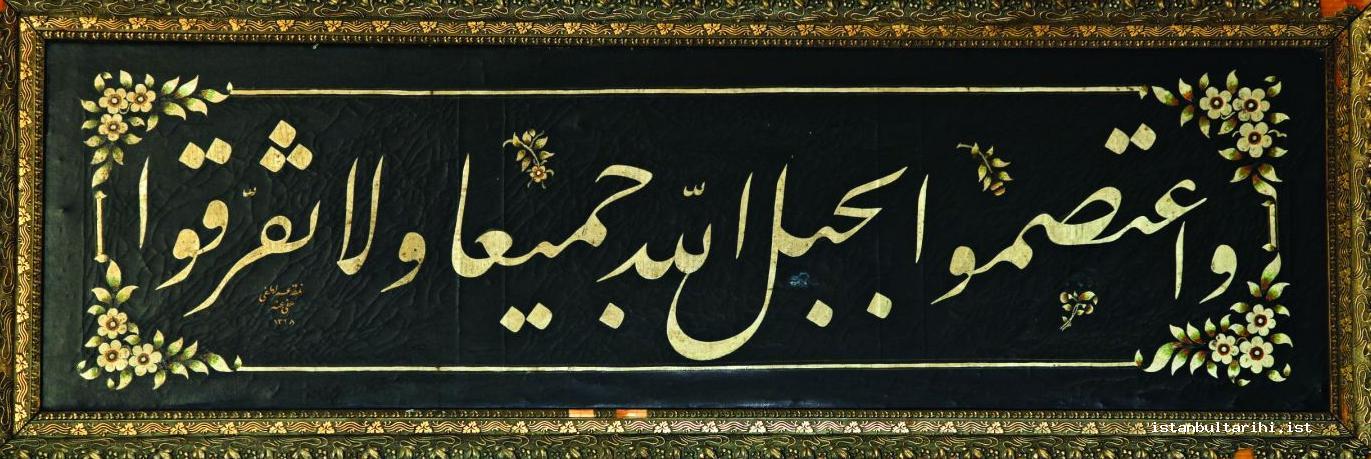
Yahya Kemal asked the question “is it possible to wake up for the morning prayer in the night of a European life,”25 thus trying to express the deep paradoxes that Muslims were experiencing while trying to confront the strong waves of modernization. Indeed, a religious life which has been compressed into a zone of faith, worship and morality amidst the experience of many turbulent processes, was propelled into a new story in which the impact of many elements were included in a daily reality in a number of ways. In this context, in contrast to the Ottoman tradition which placed religion in the top ranks of the ine qua non of social life, in the modern conditions of the Republic, progress was generally in the opposite direction. Religion, in which the civil initiative and reflexes of society were concentrated, was not restricted to being a mere indicator of identity or a reference in the flow of daily life; it also functioned as a source of social roles, representation and expectation, having a strong component of identity. The main question that needs an answer is when and how an urban Muslimhood - which was subdued and imprisoned to a tacit language and which ultimately was able to contact its own energetic world through a political language - returned to its original course.
FOOTNOTES
1 İlber Ortaylı, İstanbul’dan Sayfalar, Istanbul: İletişim Yayınları, 2002, p. 173.
2 “The final and precise victory of the nation state formula, thanks to the War of Independence, gave the city the need to redefine itself according to the rules of a new and unknown game. After experiencing a stagnancy, a semi-coma situation, for thirty years, Istanbul - which entered into a process of “purification”, complying with the criteria of the new regime in a half-hearted manner - would finally start to collect the fruits of its adaptation with the new national order by increasing its weight in the social and economic balances of the country, as if taking its revenge. It would return to life so enthusiastically after a while that the city would evolve into a chaotic metropolis that was out of control in the 1980s and 1990s.” E. Eldem, “İstanbul: İmparatorluk Payitahtından Periferileşmiş Bir Başkente,” Doğu ile Batı Arasında Osmanlı Kenti, ed Edhem Eldem, Daniel Goffman and Bruce Masters, tr. Sermet Yalçın, Istanbul: Tarih Vakfı Yurt Yayınları, 2000, p. 230.
3 For instance, Istanbul was selected as a pilot region for reformist regulations, such as those related to the ezan and sermons in Turkish. Cf. Ortaylı, İstanbul’dan Sayfalar, p. 170.
4 Edhem Eldem, “Batılılaşma, Modernleşme ve Kozmopolitizm: 19. Yüzyıl Sonu ve 20. Yüzyıl Başında İstanbul,” Osman Hamdi Bey ve Dönemi, ed. Zeynep Rona, Istanbul: Tarih Vakfı Yurt Yayınları, 1993, pp. 12-26.
5 For the customary roles of the imam see: Uğur Göktaş, “Mahalle İmamı,” DBİst.A, vol. 5, pp. 240-241.
6 Şerif Mardin points out that despite all the efforts of the new regime, religion continued to survive in the Republican period as well; he states that there are three focal points of this continuity: Cultural conservatism, tarikats and religious movements that aimed at reconciling the revival of religion with the revival of modern societies. See: Şerif Mardin, Türkiye’de Din ve Siyaset, Istanbul: İletişim Yayınları, 1993, pp. 30-31.
7 Howard A. Reed, “Çağdaş Türk Müslümanlarının Dinî Hayatı,” Türkiye’de İslâm ve Laiklik, Compiled by Davut Dursun, Istanbul: İnsan Yayınları, 1995, pp. 91-127.
8 In Yahya Kemal’s Aziz Istanbul, religion is the most significant reference point of cultural and traditional balances. In Aziz Istanbul, in which Yahya Kemal wrote about the turmoil and tension that the early period of Turkish modernization created in religious life and mental world, the author records with regret that there was an attempt ot isolate Turkish Istanbul from religion and religious feelings, “We grew up while listening to the ezan between the minarets and trees. We left those blessed neighbourhoods later on; we can go back to a mother nation again in a morning prayer like this. However, those Turkish children who were brought up with a foreign upbringing, who were born in neighborhoods without minarets and the call to prayer, will not recall places to which they can return.” Yahya Kemal Beyatlı, Aziz İstanbul, Istanbul: İstanbul Fetih Cemiyeti Yahya Kemal Enstitüsü, 1964, p. 124.
9 Osman Yüksel Serdengeçti, Mabetsiz Şehir, Istanbul 1949; Eşref Edib Fergan, Kara Kitab -Milleti Nasıl Aldattılar? Mukaddesatına Nasıl Saldırdılar? Istanbul: Sebilürreşad Neşriyatı, 1967.
10 Cf. Orhan Pamuk, İstanbul: Hatıralar ve Şehir, Istanbul: Yapı Kredi Yayınları, 2003, p. 169. According to Pamuk “the fact that religion was reduced to some weird and sometimes entertaining set of rules in which only the very low classes were interested out of despair, rather than being an activity that addresses our conscience and worldly matters through God’s presence, books, rules and prophets, made it difficult to accept it in our daily lives, which kept coming and going with a strange melody and logic between the West and the East.” Pamuk, Istanbul, p. 173.
11 Cf. Peyami Safa, Fatih-Harbiye, Istanbul: Ötüken Neşriyat,1999; Ahmet Yüksel Özemre, “Çocukluğumun ve Gençliğimin Üsküdar’ı (1935-1955),” İstanbul Armağanı: Gündelik Hayatın Renkleri, Prepared by Mustafa Armağan, Istanbul: İstanbul Büyükşehir Belediyesi, 1997, vol. 3, pp. 219-236.
12 Tanıl Bora, “Fatih’in İstanbulu - Siyasal İslâm’ın ‘Alternatif Küresel Şehir’ Hayalleri,” İstanbul Küresel ile Yerel arasında, ed. Çağlar Keyder, tr. Sungur Savran, Istanbul: Metis Yayınları, 2000, pp. 60-77.
13 Ali Bulaç, Din, Kent ve Cemaat, Istanbul: Ufuk Kitap, 2007; Cemile Burcu Kartal, “Değişen İktidar İlişkileri İçinde İki Kentin Dönüşümü: İmparatorluk’tan Cumhuriyet’e: Payitaht İstanbul’dan Makarr-ı Hükümet Ankara’ya (Dönem Basınına Yansıyan Tartışmalarla 1920-1940),” PhD thesis, Istanbul University, 2012.
14 Halil İnalcık, “İstanbul: Bir İslâm Şehri,” translated by İbrahim Kalın, İTED, 1995, vol. 9, p. 246.
15 Ekrem Işın, “Tarikatların İstanbul’da Gündelik Hayatı Şekillendirmesi Üzerine Bazı Notlar,” İstanbul Armağanı: Gündelik Hayatın Renkleri, Prepared by Mustafa Armağan, Istanbul: İstanbul Büyükşehir Belediyesi, 1997, vol. 3, p. 223.
16 For instance, while the Naqshbandi went underground before the 1950s, in later years it became more visible. This visibility was so obvious that it started to be understood as almost the only way to embrace the Republic. As Thierry Zarcone emphasizes, officially there were no tekkes in the Republic of Turkey; however, the officials knew that there were tekkes and that religious ceremonies, the execution of which had been banned until recently, were performed. The tarikats needed more than the tacit tolerance of the government to exist as a community. That is why they had to shelter behind an association, which would make the tekke legal in the eyes of the state. Some sheikhs also chose to hide behind a waqf. Cf. Thierry Zarcone, “Nakşibendîler ve Türkiye Cumhuriyeti: Zulümden, Yeniden Dini Siyasi ve Toplumsal Mevkiye Ulaşma (1925-1991),” tr. Eriman Topbaş, Türkiye Günlüğü, 1993, issue. 23, pp. 99-107; also see Catharina Raudvere, Çağdaş İstanbul’da Sûfi Kadınlar, tr. Damla Acar, Istanbul: Kitap Yayınevi, 2003, pp. 22-24.
17 As Süheyl Ünver emphasizes, in opposition to radical attacks which weighed heavily on the wave of modernization in the early period, it was clear that even the tombs of the Companions of Prophet Muhammad were abandoned to their own fate. See: A. Süheyl Ünver, İstanbul’da Sahâbe Kabirleri, Istanbul: İstanbul Fethi Derneği, 1953.
18 For the old and new structures that were important in Ramadan in Istanbul, see Ortaylı, İstanbul’dan Sayfalar, pp. 189-192; Also see Cenab Şahabeddin, İstanbul’da Bir Ramazan, prepared by Abdullah Uçman, Istanbul: İletişim Yayınları, 1994.
19 However, it should be stated that the ‘mosque’ in question did not serve the same role as the ‘mosque’ in a traditional sense; the entire history of the Republic was about suppressing a feeling that tended towards reverting mosques to their original functions. The mosque, which can be accepted as the center of social life in a sense, has a wide structure surrounding almost every believer with the premises they traditionally held. It is known that many mosques were areas that acted as a central hub for daily life, with a structure that contained different functions, such as madrasahs, libraries, hospitals, darülaceze, tekke, mektep, etc. Moreover, every mosque was transformed into a landmark as an integral part of a broad spectrum in which religious discourse and actions were involved. Finally, when mosques are considered along with other city elements, such as covered bazaars, marketplaces, bazaars, neighborhoods, streets, foundations, and waqfs, they become a basic subsidiary component of ‘a city of Islam.’ Cf. Turgut Cansever, İstanbul’u Anlamak, Istanbul: İz Yayıncılık, 2008.
20 Cf Gotthard Jäschke, Yeni Türkiye’de İslâmlık, tr. Hayrullah Örs, Istanbul: Bilgi Yayınevi, 1972.
21 For the reform project in religion and certain aspects, see: Yahya Kemal Taştan, “İslâmi Kalvinizm: Darülfünun İlahiyat Fakültesinin Dinde Reform Projesi,” Mehmet Fuat Köprülü, edited by Yahya Kemal Taştan, Ankara: Kültür ve Turizm Bakanlığı, 2012, pp. 399-418.
22 For the stages that resulted in reconstructing daily life particularly since 1980s, see: Nurdan Gürbilek, Vitrinde Yaşamak: 1980’lerin Kültürel İklimi, Istanbul: Metis Yayınları, 1992; Meltem Ahıska and Zafer Yenal, Aradığınız Kişiye Şu An Ulaşılamıyor: Türkiye’de Hayat Tarzı Temsilleri, 1980-2005, Istanbul: Osmanlı Bankası Arşiv Araştırma Merkezi, 2006.
23 In their study regarding forms of modern religiosity, tackled the experience that Muslims had in this context in terms of ideology, rituals, devotion, experimental and consequential dimensions. Mobile and variable patterns of piety are scattered in different directions which do not meet in the inner worlds of the believers, who in turn can be categorized as conservative or secular. Finally, the contradictions that appear in the Muslim mentality in different contexts, starting from the sacred vs. secular distinction, including public vs. private, sacred texts vs. everyday practices, religious knowledge vs. scientific knowledge, modern values vs. traditional values, Islam that is experienced lived vs. the Islam based on the Quran, also include different forms of piety and religiosity along with tarikats, cemaats – old or new and in individual and unusual forms. Cf. Bahattin Akşit et al., Türkiye’de Dindarlık: Sosyal Gerilimler Ekseninde İnanç ve Yaşam Biçimleri, Istanbul: İletişim Yayınları, 2012, pp. 103-262; also see: Ali Çarkoğlu and Ersin Kalaycıoğlu, Türkiye’de Dindarlık: Uluslararası Bir Karşılaştırma, Istanbul: Sabancı Üniversitesi, 2009.
24 Riaz Hassan, Müslüman Zihinler, tr. Ergin Çenebaşı, Istanbul: Doğan Kitap, 2010.
25 Beyatlı, Aziz İstanbul, p. 123.
